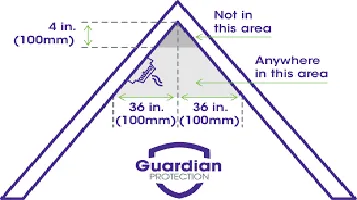Review of Smoke Detectors: Essential Guardians of Home Safety
Smoke detectors are essential safety devices designed to alert occupants of a building to the presence of smoke, often indicative of a fire. These compact, often ceiling-mounted units operate by detecting smoke particles through either ionization or photoelectric technology. Ionization smoke detectors are more responsive to flaming fires with smaller combustion particles, while photoelectric detectors are better at sensing smoldering fires with larger particles. Many modern smoke detectors combine both technologies for comprehensive protection. Upon detecting smoke, the device emits a loud alarm to prompt evacuation and emergency response. Regular maintenance, including battery checks and periodic cleaning, ensures optimal performance. Smoke detectors are a crucial component in residential and commercial fire safety strategies, significantly reducing the risk of injury and property damage.

Smoke detectors are often unheralded yet indispensable devices in our homes, quietly standing guard against one of the most destructive forces we may ever encounter: fire. These devices are designed to detect smoke or fire at the earliest stage, giving occupants precious time to evacuate and potentially saving lives. In this comprehensive review, we'll delve into the various aspects of smoke detectors, including their types, features, functionality, and the importance of regular maintenance.
Types of Smoke Detectors
There are primarily two types of smoke detectors available in the market: ionization smoke detectors and photoelectric smoke detectors.
Ionization Smoke Detectors are highly effective at detecting fast-flaming fires. They contain a small amount of radioactive material between two electrically charged plates, which ionizes the air and creates a current. When smoke enters the chamber, it disrupts the flow of ions, reducing the current and triggering the alarm.
Photoelectric Smoke Detectors, on the other hand, are more adept at sensing smoldering fires. They use a light source aimed into a sensing chamber at an angle away from the sensor. When smoke enters the chamber, it scatters the light, which is then detected by the sensor, triggering the alarm.
While both types have their strengths, many experts recommend using a combination of both ionization and photoelectric smoke detectors, or opting for dual-sensor smoke detectors, which incorporate both technologies for comprehensive protection.
Features and Functionality
Modern smoke detectors come with a variety of features designed to enhance their functionality and ensure maximum safety.
1. Battery vs. Hardwired: Smoke detectors can be either battery-operated or hardwired into your home's electrical system. Battery-operated detectors are easier to install and can be placed anywhere, but they require regular battery replacement. Hardwired detectors are more reliable in the long run and often come with battery backups to ensure they function during power outages.
2. Interconnectivity: Many new smoke detectors offer interconnectivity, meaning if one alarm is triggered, all interconnected alarms will sound. This feature is particularly useful in larger homes, ensuring that everyone is alerted regardless of where the fire starts.
3. Smart Technology: Some smoke detectors now integrate with smart home systems, allowing for remote monitoring and alerts via smartphone apps. These smart detectors can provide detailed information about the type and location of the hazard, and can even be tested or silenced remotely.
4. Combination Alarms: Many smoke detectors also include carbon monoxide (CO) detectors. This dual functionality is crucial as carbon monoxide is a colorless, odorless gas that can be deadly, and having a single device that detects both smoke and CO can save space and reduce clutter.
5. Hush Button: This feature allows you to temporarily silence the alarm without disabling it, which is particularly useful for false alarms caused by cooking smoke or steam.
Installation and Placement
Proper installation and placement of smoke detectors are critical to their effectiveness. Detectors should be installed on every level of the home, including the basement, and inside each bedroom and outside each sleeping area. It’s important to mount them high on walls or ceilings, as smoke rises. Avoid placing detectors near windows, doors, or ducts, where drafts might interfere with their operation.
Maintenance and Testing
Regular maintenance is essential to ensure that smoke detectors function correctly. Batteries should be replaced at least once a year, or immediately if the detector emits a low-battery chirp. The entire unit should be tested monthly by pressing the test button. Additionally, smoke detectors have a limited lifespan and should be replaced every 10 years, or as recommended by the manufacturer.
Importance of Smoke Detectors
The importance of smoke detectors cannot be overstated. According to the National Fire Protection Association (NFPA), having a working smoke detector in your home cuts the risk of dying in a fire by half. Fires can spread rapidly, and in many cases, you may have less than two minutes to escape safely. Early detection is crucial, and smoke detectors provide that critical early warning.
Conclusion
In conclusion, smoke detectors are a fundamental component of home safety. Whether you choose ionization, photoelectric, or dual-sensor detectors, the key is to ensure they are properly installed, regularly maintained, and interconnected if possible. The addition of smart technology and combination alarms further enhances their functionality, making them an invaluable part of any home safety plan. Investing in reliable smoke detectors is a small price to pay for the peace of mind and protection they offer, potentially saving lives and property from the devastating effects of a fire.






